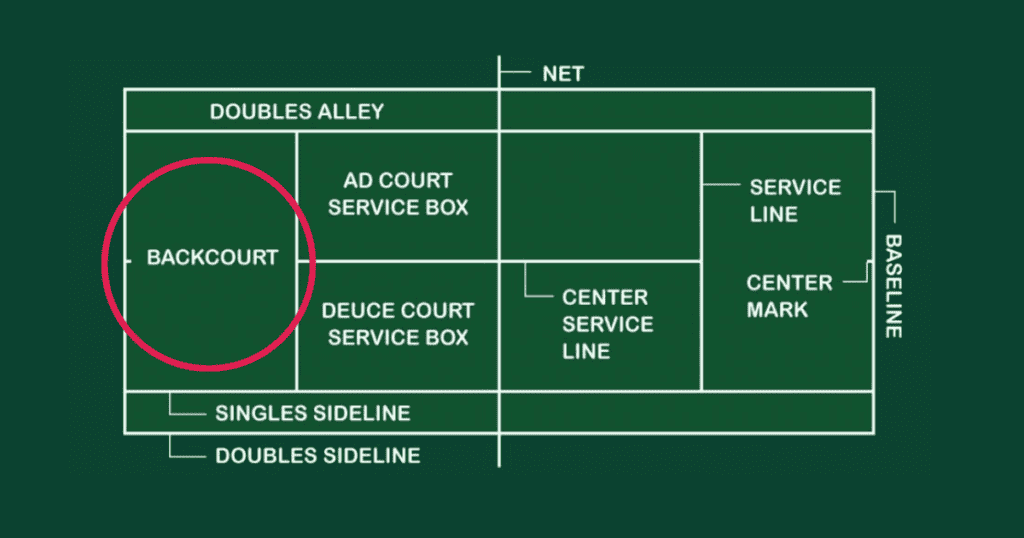What is the Back Court?
In racket sports, the court is often divided into two main areas: the front court (near the net) and the back court (the farthest area from the net).
The back court typically refers to the area where players make their baseline shots or deep clears in badminton. It’s a zone of both defense and strategic offense.

The Significance of the Back Court
- Defensive Stronghold: Being at the back allows players to have a wider view of the court, making it easier to anticipate shots and return them effectively. It’s the default position for receiving serves in tennis and badminton.
- Launching Offensives: From the back court, players can execute powerful groundstrokes in tennis, deep clears in badminton, or driving shots in squash. These shots can push opponents off balance, setting the stage for a winning shot.
- Controlling the Game: A player who commands the back court often dictates the game’s pace. By consistently placing the ball or shuttlecock deep, they force their opponent to play by their rules.
When to Utilize
The back court isn’t just a defensive position; it’s a place of strategy. Here are scenarios illustrating its effective use:
- Resetting the Rally: In badminton, when under pressure, a deep clear to the opponent’s back court gives the player time to return to a favorable position and anticipate the next shot.
- Tiring the Opponent: Consistently hitting deep shots forces your opponent to cover more ground. Over time, this can wear them down, leading to errors or slower reactions.
- Opening the Front Court: A well-executed groundstroke or clear can draw your opponent to the back. This opens up space in the front court for drop shots or volleys in the next move.
- Countering Aggressive Players: Players who like to dominate the net or front court can be neutralized by sending them deep, breaking their rhythm.
Tactics to Enhance Back Court Play
- Practice Deep Shots: Consistency is key. Work on hitting deep shots that land close to the baseline or backline, making it challenging for your opponent to return.
- Footwork and Stamina: The back court demands agility. Incorporate drills that enhance footwork, enabling quick changes in direction and efficient shot execution.
- Mix it Up: While deep shots are effective, being predictable can be a downfall. Occasionally mix in drop shots or slices to keep your opponent guessing.
Common Mistakes
- Overhitting: Sending the ball or shuttlecock too long, resulting in unforced errors.
- Being Too Defensive: Over-relying on the back court and not venturing forward can make a player predictable and passive.
- Poor Positioning: Standing too far back makes it difficult to return short balls or drop shots.
Summary
The back court, an essential zone in racket sports, serves as a fortress of defense and a launchpad for strategic offensives. Dominating this area means controlling the game’s pace, tiring your opponent, and creating opportunities for point-winning shots.
However, like any strategy, it’s vital to strike a balance. While the back court offers numerous advantages, players must remain versatile, adapting to the game’s flow and their opponent’s tactics.
So, whether you’re a budding player or an avid fan, understanding the nuances of the back court can deepen your appreciation for the game and enhance your performance on the court.